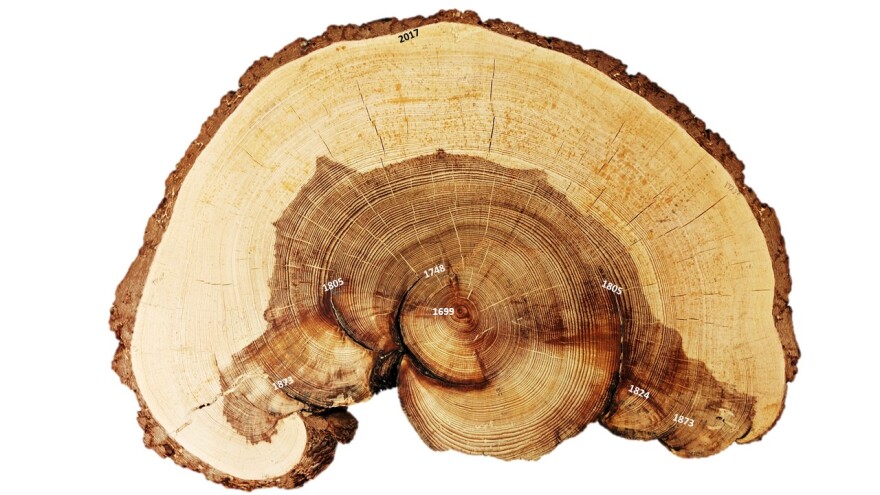Trees keep a record of the fires they survived. Their rings make a kind of library of a landscape’s history, going back centuries or even millennia—if you know how to read it.
Now, that library exists virtually as the North American Tree-Ring Fire Scar Network, an enormous database that can help researchers understand fire patterns through space and time.
A fire that doesn’t kill a tree leaves a dark mark on its annual growth rings. By cross dating the rings with historical climate records and other nearby trees, scientists can pinpoint the year the fire burned and sometimes even the season. Taken together, the records show the size and severity of past wildfires.
The oldest records in the database come from the giant sequoias of California, which have fire scars dating to the 13th century BC. In the Western U.S., fire scars reveal a historic pattern of frequent, low-severity fires, sparked by lightning or set deliberately by Indigenous peoples as a form of land management.
But around the year 1900, the fire scars disappear. That’s when federal agencies sought to stamp out wildfires. The result was unnaturally overcrowded forests. Today, Western wildfires are increasing in size and severity, as a result of the extra fuel and rising global temperatures.
The Tree-Ring Fire-Scar Network can help researchers tease out those patterns; pinpoint the places where healthy fire needs to be reintroduced; or even forecast the future. The growing database includes more than 37,000 individual trees.
This Earth Note was written by Melissa Sevigny and produced by KNAU and the Sustainable Communities Program of Northern Arizona University.
Online interactive map:
https://chguiterman.github.io/NAFireHistory/map.html
Open-access publication:
https://doi.org/10.1002/ecs2.4159
Correction: An earlier version of this story misstated the oldest records as 13th century. The correct date is 13th century BC.









